Abstract
OBJECTIVE: Twenty-five years of experience with subclavian revascularizations were reviewed to determine the long-term patency rates of different extrathoracic approaches. SUMMARY BACKGROUND DATA: Although it is generally agreed that proximal subclavian stenosis should be treated by an extrathoracic route whenever possible, the optimum procedure is debated. Alternatives include subclavian carotid bypass, subclavian-to-subclavian or axillo-axillary bypasses, and the authors' preferred technique of subclavian carotid transposition (SCT). METHODS: Records were researched for the past 25 years in a single specialty surgical clinic for extrathoracic subclavian revascularizations. One hundred ninety such procedures were identified, and hospital charts and office medical records were reviewed for procedure, preoperative symptoms, blood pressure differentials, and postoperative complications. Patency was determined by physical examination, differential blood pressures, Doppler spectral analysis, duplex examinations, and arteriography. RESULTS: Bypass procedures were used infrequently, and although the results are reported, they are excluded from any analysis. Subclavian carotid transposition was used in 178 procedures. All anastomoses were found to be patient at follow-up, except for one, which failed at 26 months. Mean follow-up was 46 months, with five patients lost to follow-up. Overall mortality rate was 2.2%, with the mortality falling to 1.1% if only subclavian carotid transposition patients are included. CONCLUSIONS: Subclavian carotid transposition should be the treatment of choice for routine subclavian carotid occlusive disease because of its exceptional long-term patency and low morbidity.
Full text
PDF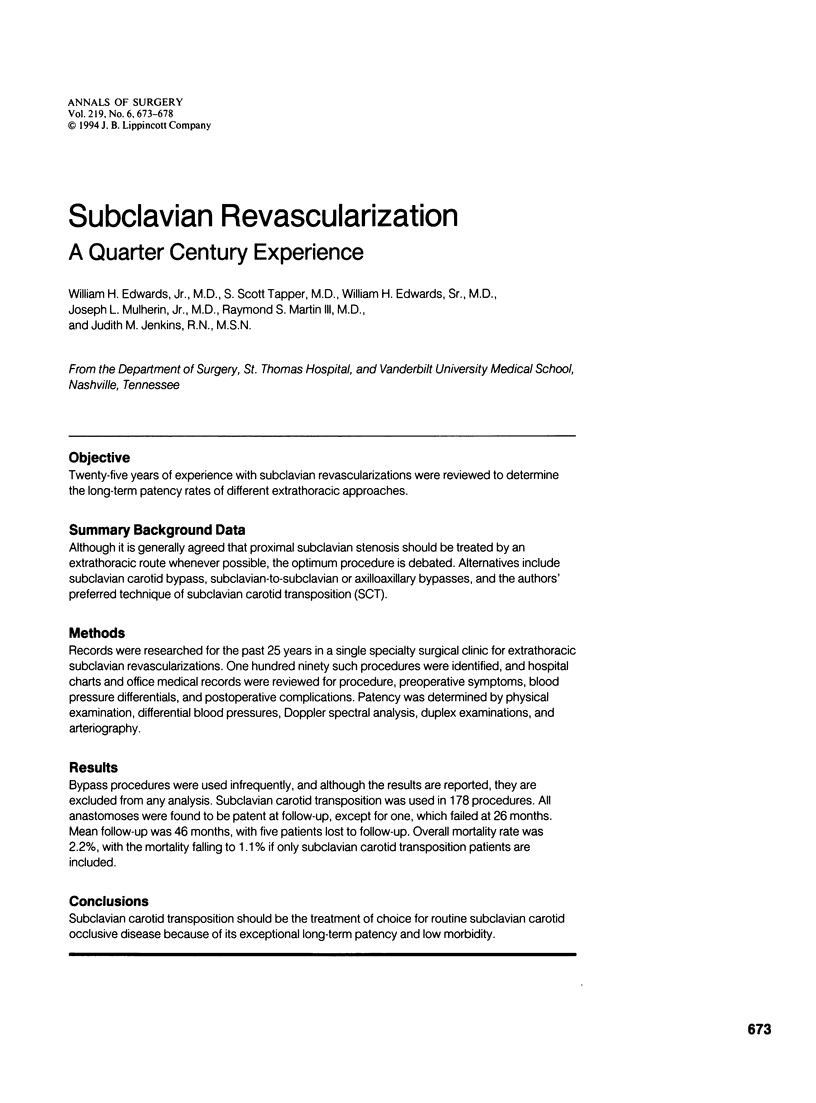
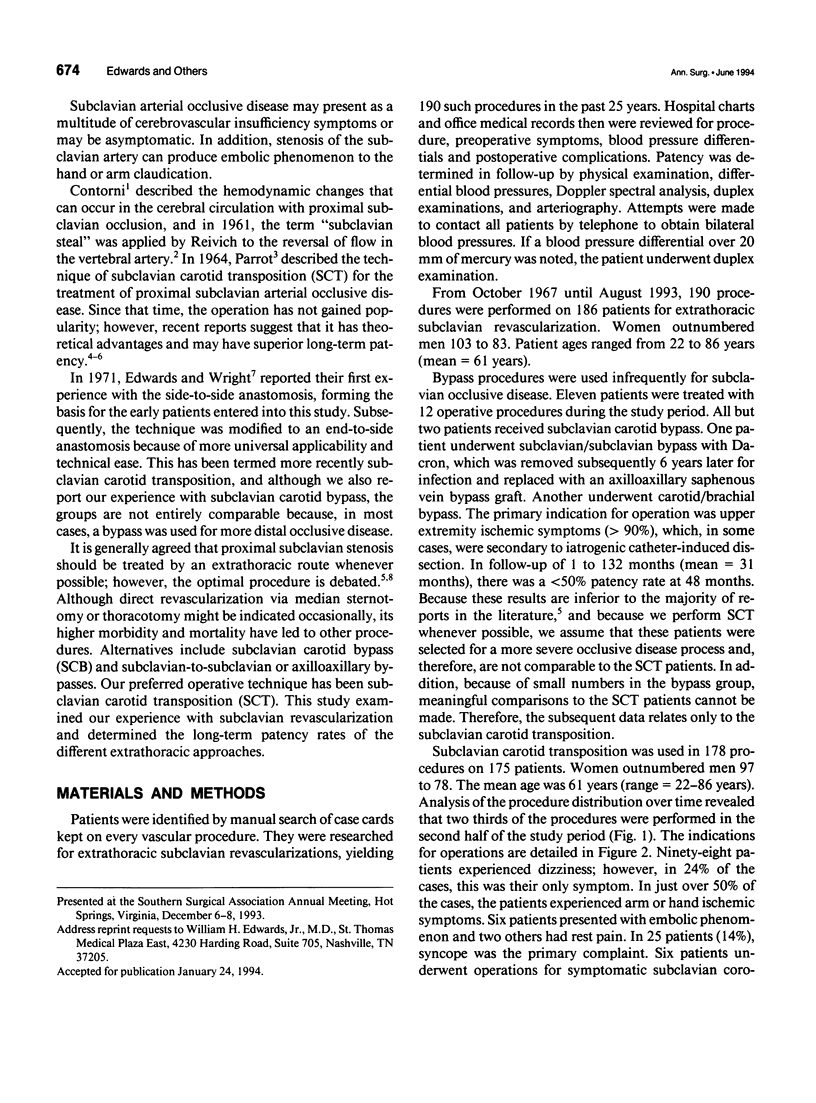
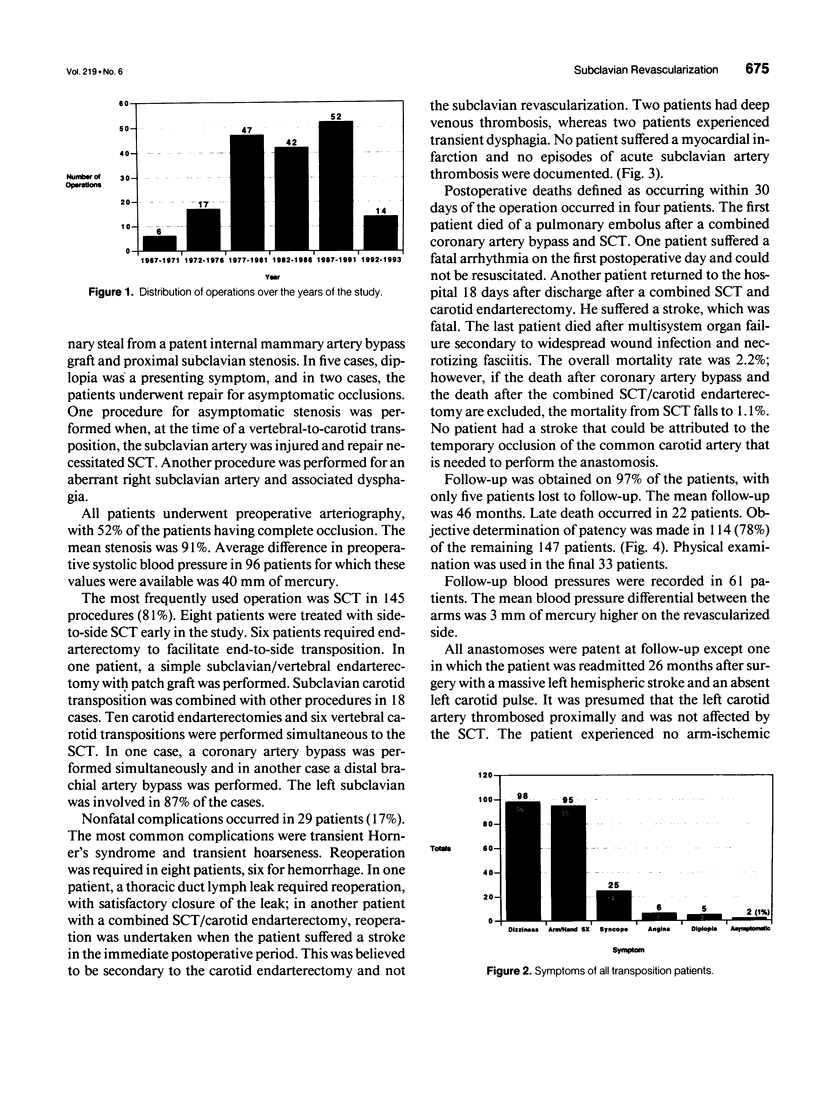
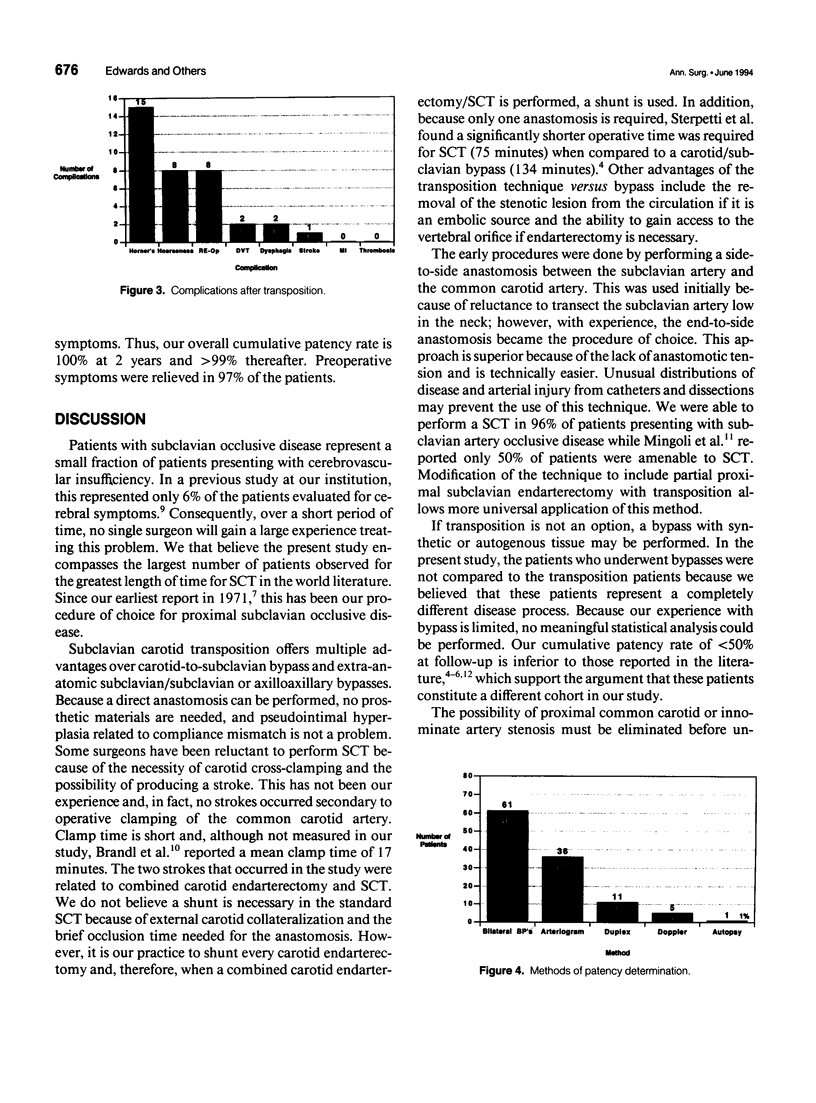
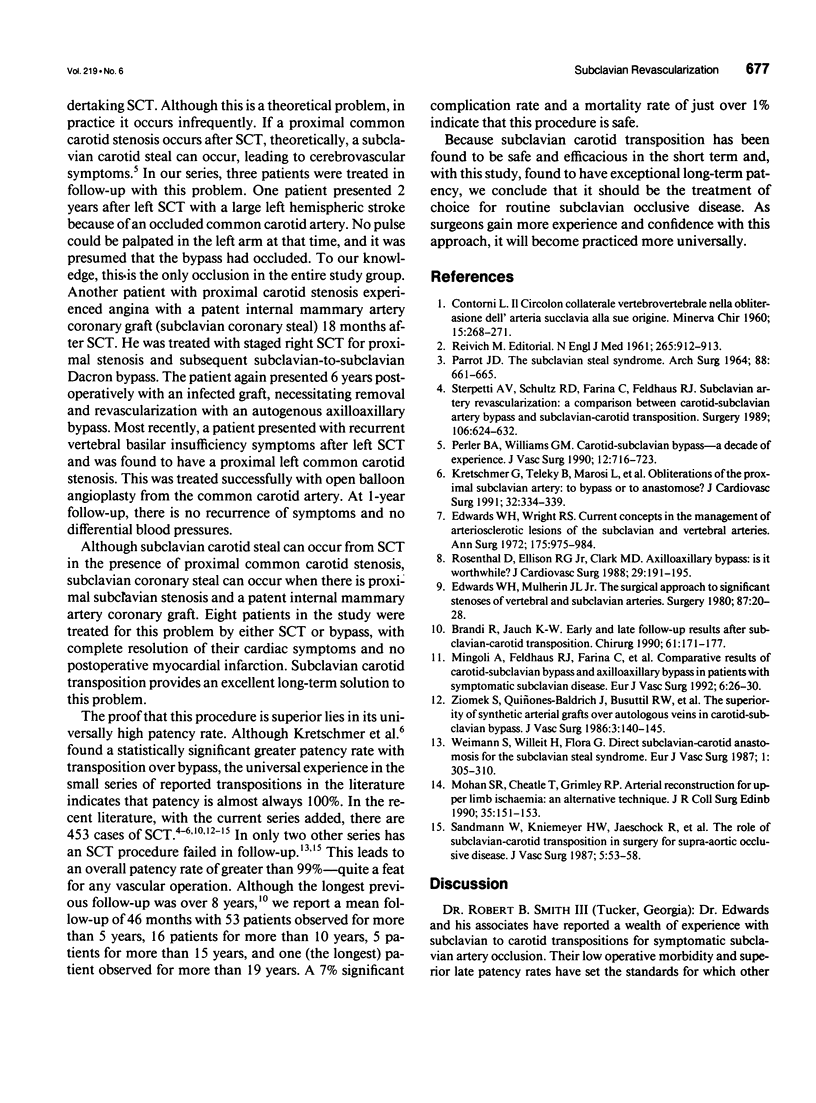
Selected References
These references are in PubMed. This may not be the complete list of references from this article.
- Brandl R., Jauch K. W., Bae J. S. Früh- und Spätergebnisse nach Subclaviatransposition. Chirurg. 1990 Mar;61(3):171–177. [PubMed] [Google Scholar]
- CONTORNI L. [The vertebro-vertebral collateral circulation in obliteration of the subclavian artery at its origin]. Minerva Chir. 1960 Mar 15;15:268–271. [PubMed] [Google Scholar]
- Edwards W. H., Mulherin J. L., Jr The surgical approach to significant stenosis of vertebral and subclavian arteries. Surgery. 1980 Jan;87(1):20–28. [PubMed] [Google Scholar]
- Edwards W. H., Wright R. S. Current concepts in the management of arteriosclerotic lesions of the subclavian and vertebral arteries. Ann Surg. 1972 Jun;175(6):975–984. doi: 10.1097/00000658-197206010-00017. [DOI] [PMC free article] [PubMed] [Google Scholar]
- Kretschmer G., Teleky B., Marosi L., Wagner O., Wunderlich M., Karnel F., Jantsch H., Schemper M., Polterauer P. Obliterations of the proximal subclavian artery: to bypass or to anastomose? J Cardiovasc Surg (Torino) 1991 May-Jun;32(3):334–339. [PubMed] [Google Scholar]
- Mingoli A., Feldhaus R. J., Farina C., Schultz R. D., Cavallaro A. Comparative results of carotid-subclavian bypass and axillo-axillary bypass in patients with symptomatic subclavian disease. Eur J Vasc Surg. 1992 Jan;6(1):26–30. doi: 10.1016/s0950-821x(05)80090-8. [DOI] [PubMed] [Google Scholar]
- Mohan S. R., Cheatle T., Grimley R. P. Arterial reconstruction for upper limb ischaemia: an alternative technique. J R Coll Surg Edinb. 1990 Jun;35(3):157–153. [PubMed] [Google Scholar]
- PARROTT J. C. THE SUBCLAVIAN STEAL SYNDROME. Arch Surg. 1964 Apr;88:661–665. doi: 10.1001/archsurg.1964.01310220151023. [DOI] [PubMed] [Google Scholar]
- Perler B. A., Williams G. M. Carotid-subclavian bypass--a decade of experience. J Vasc Surg. 1990 Dec;12(6):716–723. doi: 10.1067/mva.1990.24577. [DOI] [PubMed] [Google Scholar]
- Rosenthal D., Ellison R. G., Jr, Clark M. D., Lamis P. A., Stanton P. E., Jr, Codner M. A., Daniel W. W. Axilloaxillary bypass: is it worthwhile? J Cardiovasc Surg (Torino) 1988 Mar-Apr;29(2):191–195. [PubMed] [Google Scholar]
- Sandmann W., Kniemeyer H. W., Jaeschock R., Hennerici M., Aulich A. The role of subclavian-carotid transposition in surgery for supra-aortic occlusive disease. J Vasc Surg. 1987 Jan;5(1):53–58. doi: 10.1067/mva.1987.avs0050053. [DOI] [PubMed] [Google Scholar]
- Sterpetti A. V., Schultz R. D., Farina C., Feldhaus R. J. Subclavian artery revascularization: a comparison between carotid-subclavian artery bypass and subclavian-carotid transposition. Surgery. 1989 Oct;106(4):624–632. [PubMed] [Google Scholar]
- Weimann S., Willeit H., Flora G. Direct subclavian-carotid anastomosis for the subclavian steal syndrome. Eur J Vasc Surg. 1987 Oct;1(5):305–310. doi: 10.1016/s0950-821x(87)80056-7. [DOI] [PubMed] [Google Scholar]
- Ziomek S., Quiñones-Baldrich W. J., Busuttil R. W., Baker J. D., Machleder H. I., Moore W. S. The superiority of synthetic arterial grafts over autologous veins in carotid-subclavian bypass. J Vasc Surg. 1986 Jan;3(1):140–145. [PubMed] [Google Scholar]


